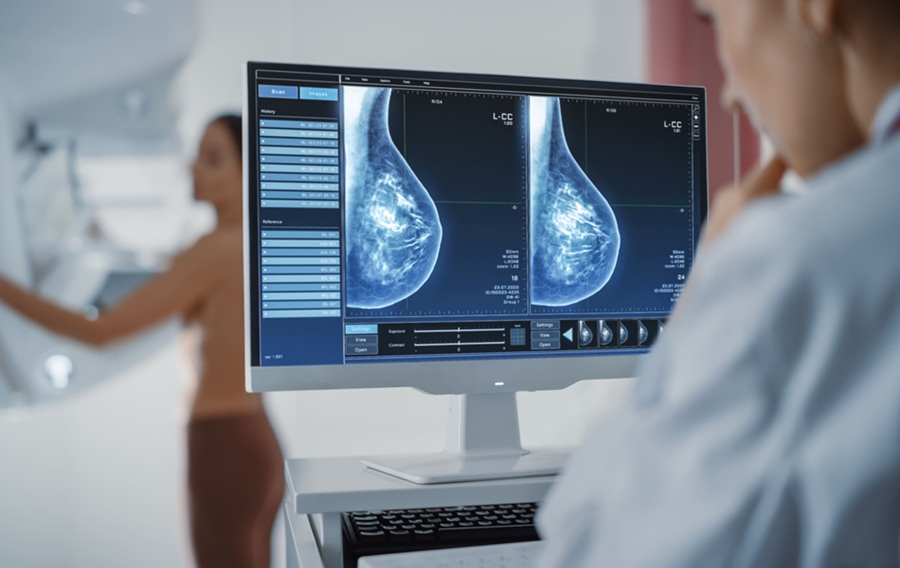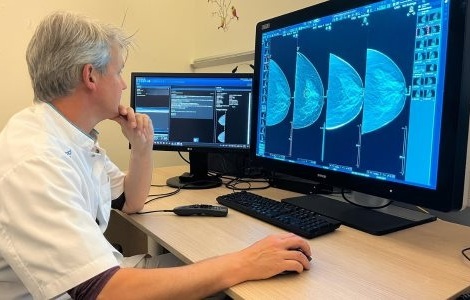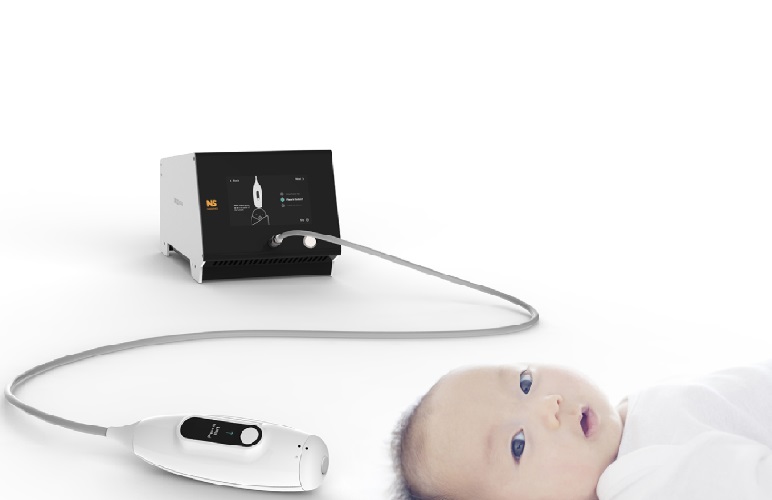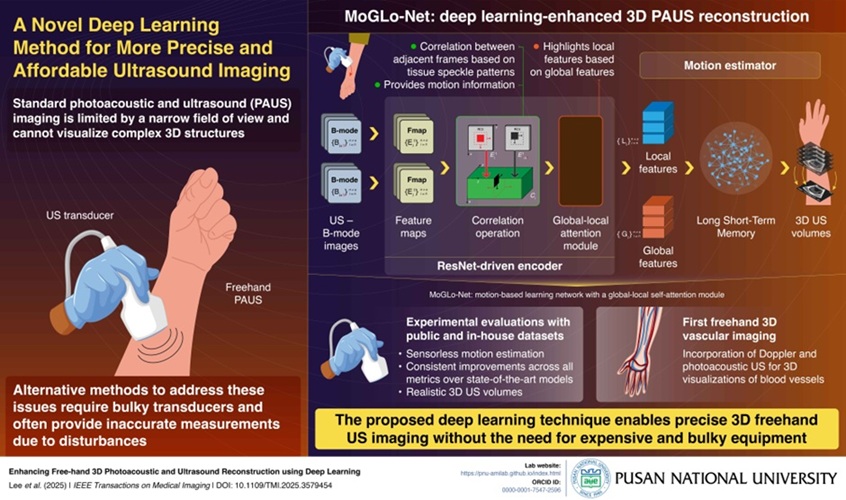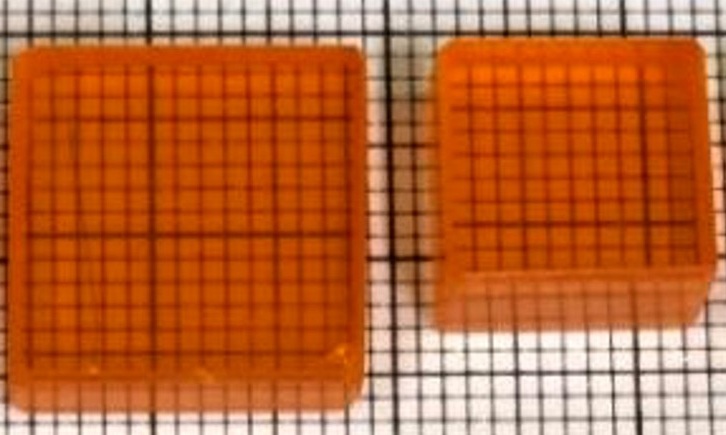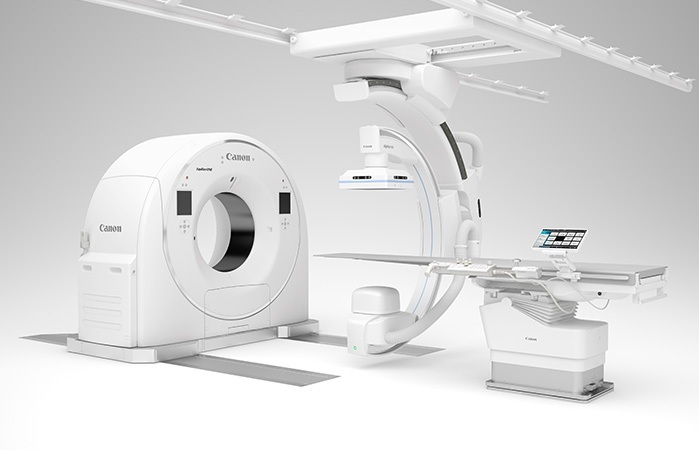Lunit Unveils AI-Based Mammography Solution at RSNA 2018
|
By MedImaging International staff writers Posted on 26 Nov 2018 |
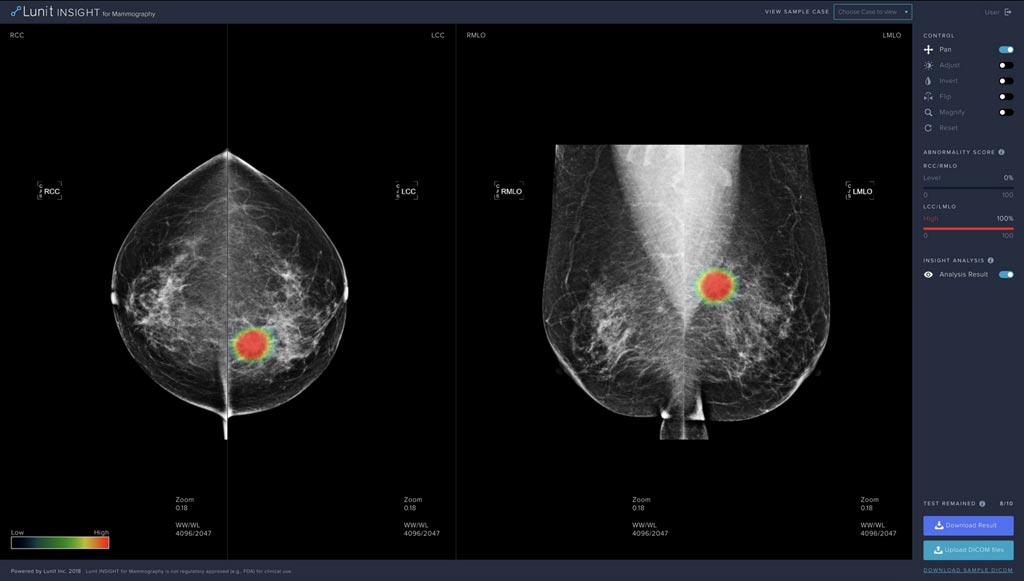
Image: The Lunit INSIGHT for Mammography is expected to increase the cancer detection rate of radiologists by 10% when used as a second reader (Photo courtesy of Lunit).
Lunit (Seoul, South Korea), a medical artificial intelligence (AI) software company, showcased its newest AI solution for breast cancer—Lunit INSIGHT for Mammography— at this year's gathering of Radiological Society North America (RSNA), which was held on November 25-30 at McCormick Place in Chicago, Ill., USA.
Lunit, abbreviated from "learning unit," is focused on developing advanced medical image analytics and data-driven imaging biomarkers via cutting-edge deep learning technology. The company’s mission is to empower physicians with clinically actionable insights that foster accurate and cost-efficient diagnosis and treatment through unprecedented AI-powered imaging biomarkers with cutting-edge, world-leading accuracy.
Lunit's newest AI software, Lunit INSIGHT for Mammography delivers an accuracy of 97% in detecting malignant lesions, which is expected to increase the cancer detection rate of radiologists by 10% when used as a second reader. The company also claims that its AI solution can enable general radiologists to perform at a specialist level, providing solutions to health facilities that experience strains with lack of specialists. It also aims to decrease recall rate and as a result, save medical costs that are being wasted every year.
At RSNA 2018, the company also showcased Lunit INSIGHT for Chest Radiography, which has been tested in more than 1.5 million cases from more than 70 countries since being launched during last year's RSNA. With an accuracy level of 97-99%, it detects major chest abnormalities including nodules, consolidation, pneumothorax, etc. The CAD-based solution is also being integrated into the worklist for prioritization, in which positive cases may be read first in order to decrease turnaround time and increase overall reading productivity.
Lunit's proprietary AI technology has been trained with vast quality medical data to ensure high accuracy levels. The company’s AI has been trained with over 200,000 chest X-ray cases and 200,000 mammogram cases, out of which 50,000 cases were biopsy-proven malignant cases.
Lunit also presented six abstracts during RSNA 2018, consisting mainly of its latest findings and studies based on its AI technology in medical imaging such as mammography and chest radiography. Lunit’s new CEO Brandon Suh was on stage at Machine Learning Theater to give a presentation titled, “From AI-powered Diagnostic Support Tools to Imaging Biomarkers: Aiming Beyond Human-Level Accuracy,” which provided an overview of the company’s recent achievements and future developments.
Related Links:
Lunit
Lunit, abbreviated from "learning unit," is focused on developing advanced medical image analytics and data-driven imaging biomarkers via cutting-edge deep learning technology. The company’s mission is to empower physicians with clinically actionable insights that foster accurate and cost-efficient diagnosis and treatment through unprecedented AI-powered imaging biomarkers with cutting-edge, world-leading accuracy.
Lunit's newest AI software, Lunit INSIGHT for Mammography delivers an accuracy of 97% in detecting malignant lesions, which is expected to increase the cancer detection rate of radiologists by 10% when used as a second reader. The company also claims that its AI solution can enable general radiologists to perform at a specialist level, providing solutions to health facilities that experience strains with lack of specialists. It also aims to decrease recall rate and as a result, save medical costs that are being wasted every year.
At RSNA 2018, the company also showcased Lunit INSIGHT for Chest Radiography, which has been tested in more than 1.5 million cases from more than 70 countries since being launched during last year's RSNA. With an accuracy level of 97-99%, it detects major chest abnormalities including nodules, consolidation, pneumothorax, etc. The CAD-based solution is also being integrated into the worklist for prioritization, in which positive cases may be read first in order to decrease turnaround time and increase overall reading productivity.
Lunit's proprietary AI technology has been trained with vast quality medical data to ensure high accuracy levels. The company’s AI has been trained with over 200,000 chest X-ray cases and 200,000 mammogram cases, out of which 50,000 cases were biopsy-proven malignant cases.
Lunit also presented six abstracts during RSNA 2018, consisting mainly of its latest findings and studies based on its AI technology in medical imaging such as mammography and chest radiography. Lunit’s new CEO Brandon Suh was on stage at Machine Learning Theater to give a presentation titled, “From AI-powered Diagnostic Support Tools to Imaging Biomarkers: Aiming Beyond Human-Level Accuracy,” which provided an overview of the company’s recent achievements and future developments.
Related Links:
Lunit
Latest RSNA 2018 News
- New AI-Powered Lung Imaging Solution Launched at RSNA 2018
- Agfa Brings Intelligent Radiography to RSNA 2018
- Carestream Displays Several IT Offerings at Radiology Congress
- Double Black Imaging Announces Expanded Clinical LCD Line at Trade Show
- Guerbet Showcases Ongoing Collaboration with IBM Watson at Radiology Trade Fair
- Fujifilm Showcases New DR Detectors and AI Initiative in Chicago
- M*Modal Launches Cloud-Based Version of AI-Powered Reporting Solution
- MDW Unveils First Radiology Blockchain Platform at RSNA 2018
- Teledyne DALSA Displays Xineos Family of CMOS X-ray Detectors
- SuperSonic Imagine Showcases New Ultrasound System at RSNA 2018
- CIVCO Medical Solutions Introduces Next-Generation of Ultrasound Accessories
- Subtle Medical Showcases Al for PET and MRI Scans at RSNA 2018
- Philips Launches New Platform to Enable Development of AI Assets
Channels
Radiography
view channel
X-Ray Breakthrough Captures Three Image-Contrast Types in Single Shot
Detecting early-stage cancer or subtle changes deep inside tissues has long challenged conventional X-ray systems, which rely only on how structures absorb radiation. This limitation keeps many microstructural... Read more
AI Generates Future Knee X-Rays to Predict Osteoarthritis Progression Risk
Osteoarthritis, a degenerative joint disease affecting over 500 million people worldwide, is the leading cause of disability among older adults. Current diagnostic tools allow doctors to assess damage... Read moreMRI
view channel
Novel Imaging Approach to Improve Treatment for Spinal Cord Injuries
Vascular dysfunction in the spinal cord contributes to multiple neurological conditions, including traumatic injuries and degenerative cervical myelopathy, where reduced blood flow can lead to progressive... Read more
AI-Assisted Model Enhances MRI Heart Scans
A cardiac MRI can reveal critical information about the heart’s function and any abnormalities, but traditional scans take 30 to 90 minutes and often suffer from poor image quality due to patient movement.... Read more
AI Model Outperforms Doctors at Identifying Patients Most At-Risk of Cardiac Arrest
Hypertrophic cardiomyopathy is one of the most common inherited heart conditions and a leading cause of sudden cardiac death in young individuals and athletes. While many patients live normal lives, some... Read moreUltrasound
view channel
Ultrasound Probe Images Entire Organ in 4D
Disorders of blood microcirculation can have devastating effects, contributing to heart failure, kidney failure, and chronic diseases. However, existing imaging technologies cannot visualize the full network... Read more
Disposable Ultrasound Patch Performs Better Than Existing Devices
Wearable ultrasound devices are widely used in diagnostics, rehabilitation monitoring, and telemedicine, yet most existing models rely on lead-based piezoelectric ceramics that pose health and environmental risks.... Read moreNuclear Medicine
view channel
Radiotheranostic Approach Detects, Kills and Reprograms Aggressive Cancers
Aggressive cancers such as osteosarcoma and glioblastoma often resist standard therapies, thrive in hostile tumor environments, and recur despite surgery, radiation, or chemotherapy. These tumors also... Read more
New Imaging Solution Improves Survival for Patients with Recurring Prostate Cancer
Detecting recurrent prostate cancer remains one of the most difficult challenges in oncology, as standard imaging methods such as bone scans and CT scans often fail to accurately locate small or early-stage tumors.... Read moreGeneral/Advanced Imaging
view channel
AI Tool Improves Medical Imaging Process by 90%
Accurately labeling different regions within medical scans, a process known as medical image segmentation, is critical for diagnosis, surgery planning, and research. Traditionally, this has been a manual... Read more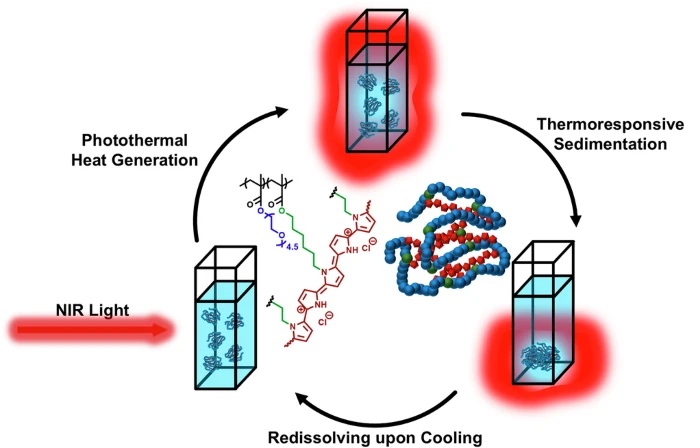
New Ultrasmall, Light-Sensitive Nanoparticles Could Serve as Contrast Agents
Medical imaging technologies face ongoing challenges in capturing accurate, detailed views of internal processes, especially in conditions like cancer, where tracking disease development and treatment... Read more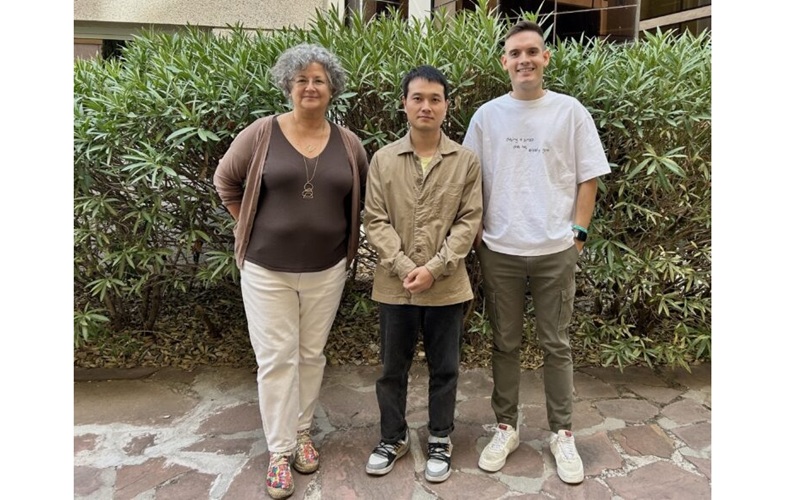
AI Algorithm Accurately Predicts Pancreatic Cancer Metastasis Using Routine CT Images
In pancreatic cancer, detecting whether the disease has spread to other organs is critical for determining whether surgery is appropriate. If metastasis is present, surgery is not recommended, yet current... Read moreImaging IT
view channel
New Google Cloud Medical Imaging Suite Makes Imaging Healthcare Data More Accessible
Medical imaging is a critical tool used to diagnose patients, and there are billions of medical images scanned globally each year. Imaging data accounts for about 90% of all healthcare data1 and, until... Read more
Global AI in Medical Diagnostics Market to Be Driven by Demand for Image Recognition in Radiology
The global artificial intelligence (AI) in medical diagnostics market is expanding with early disease detection being one of its key applications and image recognition becoming a compelling consumer proposition... Read moreIndustry News
view channel
GE HealthCare and NVIDIA Collaboration to Reimagine Diagnostic Imaging
GE HealthCare (Chicago, IL, USA) has entered into a collaboration with NVIDIA (Santa Clara, CA, USA), expanding the existing relationship between the two companies to focus on pioneering innovation in... Read more
Patient-Specific 3D-Printed Phantoms Transform CT Imaging
New research has highlighted how anatomically precise, patient-specific 3D-printed phantoms are proving to be scalable, cost-effective, and efficient tools in the development of new CT scan algorithms... Read more
Siemens and Sectra Collaborate on Enhancing Radiology Workflows
Siemens Healthineers (Forchheim, Germany) and Sectra (Linköping, Sweden) have entered into a collaboration aimed at enhancing radiologists' diagnostic capabilities and, in turn, improving patient care... Read more





 Guided Devices.jpg)






